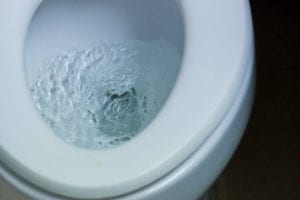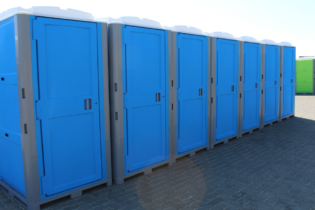Conventional waterborne systems connected to centralised sewers are usually the preferred gold-standard choice for sanitation around the world. On the other side of the technological scale are on-site sanitation systems. Although less popular among users, these remain the most prevalent technology choice in the developing world.
By Jay Bhagwan* and Sudhir Pillay** In the developing world, on-site sanitation approaches are often viewed as a stop-gap solution until conventional waterborne systems can be implemented. The challenge for developing countries is that they need to match the pace of increasing urbanisation and population growth under conditions of increasing water scarcity, and constrained financial and technical resources. Urbanisation is occurring at a rapid rate in developing countries, leaving them with the question of whether they will ever reach universal sanitation coverage via conventional systems, while also managing increasing water, energy and pollution demands. Instead, a new paradigm shift to current sanitation approaches is proposed – one that moves away from the current linear design approaches to a holistic model that shortens the management chain through treatment at source and resource recovery. Through the introduction of innovative technology, it is envisaged that new business opportunities will be created, which could be aligned to management of the toilets to ensure that services are sustainable.The centralised approach
Since the last century, the centralised approach has been typified by a network of sewers linked to communities. This network transports large volumes of wastewater to a collection, treatment and disposal point. Historically, the roots of this approach can be traced back to the outbreak of waterborne diseases, especially cholera, on the European continent. While this strategy led to the significant reduction of the outbreak of waterborne diseases, is it extremely wasteful. In the developed world, the centralised approach underwent continuous improvement: from basic treatment and dilution strategies to protect public health towards more efficient systems to meet ever-increasing environmental protection and control standards. Today, the centralised approach can be considered as the model sanitation approach, especially for urban areas, worldwide. But while developed countries have continuously improved conventional wastewater-based strategies to become more reliable and efficient over time, developing countries have struggled to implement this technology successfully. This is largely because developing countries need significant investment for centralised sewerage infrastructure. There is a significant unserved population in developing countries and infrastructure provision has to address these backlogs, while also keeping pace with rapid population growth and urbanisation. Cost is a major driver for the technical approach used. There are generally four main aspects considered by developing countries in the selection of a wastewater treatment: infrastructure costs, sustainability, operational costs and simplicity.A generalised estimate put forward by the World Health Organization/Unicef indicated that the cost per person connecting to the sewer network is 5% to 50% higher than on-site alternatives. Further, the capital cost of treatment option can be nearly double that of a septic tank (based on a community of 10 000 people and in comparison with the activated sludge process).
Besides the infrastructure investment, a suite of other resources – such as water, energy, and high-level designers, technicians and operators – is required to properly manage wastewater plants and their auxiliary equipment. The lack of these resources can result in infrastructure deterioration and unreliable service provision. It is clear that the application of the centralised waterborne approach in the developing world has not reached the desired impact, as in the developed world. As a consequence, developing nations still have a heavy reliance on on-site sanitation approaches.Read the full article for FREE in our digimag.
Highlights from the full article:- The madness of the flush – a closer look at the numbers
- The benefits of non-sewered sanitation
- Alternative technologies
- Opportunities to grow a new industry








